Dear readers and friends,
A few kind folks have checked in, saying that they haven’t heard from me or Wanderlife in a bit. It makes me so incredibly happy to know you are reading and paying attention, so thank you. And the slow-down is partially intentional: I don’t want to overwhelm your inbox to the point that you grow weary. But also, the truth is that life is full, I get busy, and I don’t always have much to say and share. As I mentioned in March, this time of year is hard for me.
But the good thing about having a project like this is that I can use it to pull me through the times when I’m not naturally high on life. The desire to share my writing came from a hope that turning toward inspiration with gratitude would generate more curiosity - for you and for me. The quote from Tom Robbins that serves as a guidepost for Wanderlife continues to give my own meandering interests an organizing principle: “We are in this life to enlarge the soul, liberate the spirit, and light up the brain.”
There is more to our days than that, of course, but I connect with my purpose and with my people through the shared human experience of wonder and awe that comes, often, from paying attention while I wander around.
There is a book out now that everyone seems to be talking about called “Awe: The New Science of Everyday Wonder and How It Can Transform Your Life.” The title alone is intriguing, though sounds a bit like self-help. Not that I couldn’t use some help. I’m still waiting on hold at the library to get a copy, so I have listened to the author, Dacher Keltner, talk about his research and conclusions on various podcasts. I like him. I’d love to have a beer with him, or wander around with him, or take one of his classes! He teaches at UC-Berkeley, where he is the director of the Greater Good Science Center. You can find his podcast here.
For Dacher, “Awe is defined as the feeling of being in the presence of something vast that transcends your current understanding of the world.”
In a study of people watching fireworks in 144 different countries, they found that people’s facial expressions were the same. In other words, awe is one of the most universal ways that humans relate to the world! It is a standard part of our emotional toolkit, no matter time or place.
And the sound of awe, he says, is also universal. It’s “Whoa!”
Whoa!
Again, I haven’t read the book, but I did just drive all day with my family to the path of totality in Ohio to experience the 2024 solar eclipse. There has been plenty written about that already, so I’ll just say that it was awesome. All of us gathered together celebrated a collective WHOA! Kids, adults, elders, and a random Amazon driver.
As the sky started to darken in the suburban development outside the village of Powell, an Amazon van pulled in to a culdesac across the lawn where we were sitting on blankets staring at the sky. All at once, the seven children and one dad jumped up and ran over to offer the driver some viewing glasses. In the picture below, you can see that the driver in the navy, grey and white shirt paused in his speedy delivery to gaze skyward for a moment of awe. I am going to bet he won’t forget that, and neither will we. I was proud of those kids who instinctively wanted to share their wonder and to make sure that nobody missed out on the opportunity to transcend beyond routine circumstances.
The kids are alright.
If you are looking for more images of the solar eclipse of 2024, check out this collection curated by my neighbor Andy at FlakPhoto, who writes beautifully about making and appreciating pictures. I particularly love The Reaction shots!
“Postcards” from near and far.
Short stories, personal reflections, and unexpected explorations.
One of my favorite travel writers has not been translated into English, as far as I know, so I’ll paraphrase from her introduction to a collection of travel essays. With her signature wit, Elke Heidenreich sums up my own feeling: “I travel in order to be somewhere else.”
I came home from a few days ‘somewhere else’ thinking brighter, more generative thoughts. Maybe it was the eclipse, the time with my sister-friends, or maybe it was the magic of travel.
When I travel, I notice everything - encounters, surroundings, differences, similarities, smells and tastes and vibes. My eyes are open to all the marvels of the world. It teaches me, over and over, the fine art and enormous rewards of paying attention. I love to travel.
Last month I wrote about a new book by Mary Jo Hoffman with the subtitle “The Art of Noticing.” The book of photographs and essays reminds me of the sneaky truth that paying attention is the only requirement for seeing beauty everywhere. Yes, it’s true that despite the muddy grey of a slow-coming spring, I do love my homeplace in the Great Lakes region of the upper Midwest. But that said, I am a wanderer at heart and have cultivated a passion for exploring new places. The invitation and excuse to drive into a different time zone where spring is a few weeks more advanced in Ohio was very welcome.
I grew up in the capital city and college town of Columbus, but I hadn't been there in 13 years. I’d never shown it to my kids. I’d never walked with them on paths I’d walked a million times at their age. It was truly a trip down memory lane and a chance to see the place, and my life, with a heightened sense of wonder.
What follows is not a tourism guide. Instead I’m sending a couple of ‘postcards’ from one day in Columbus.
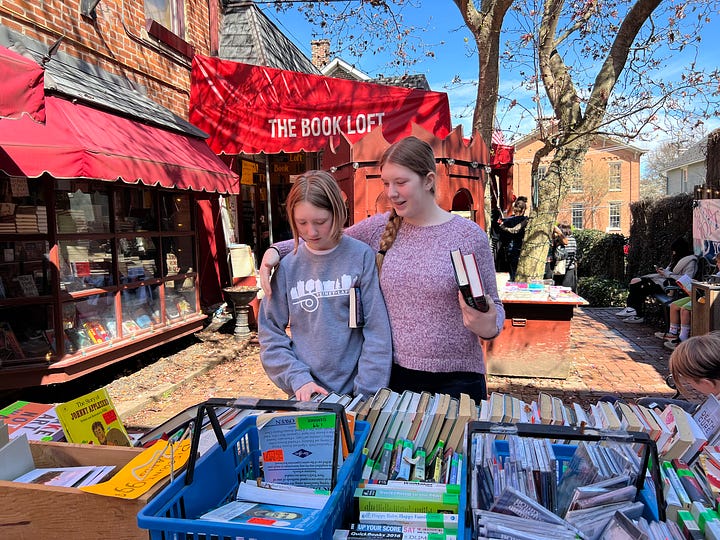
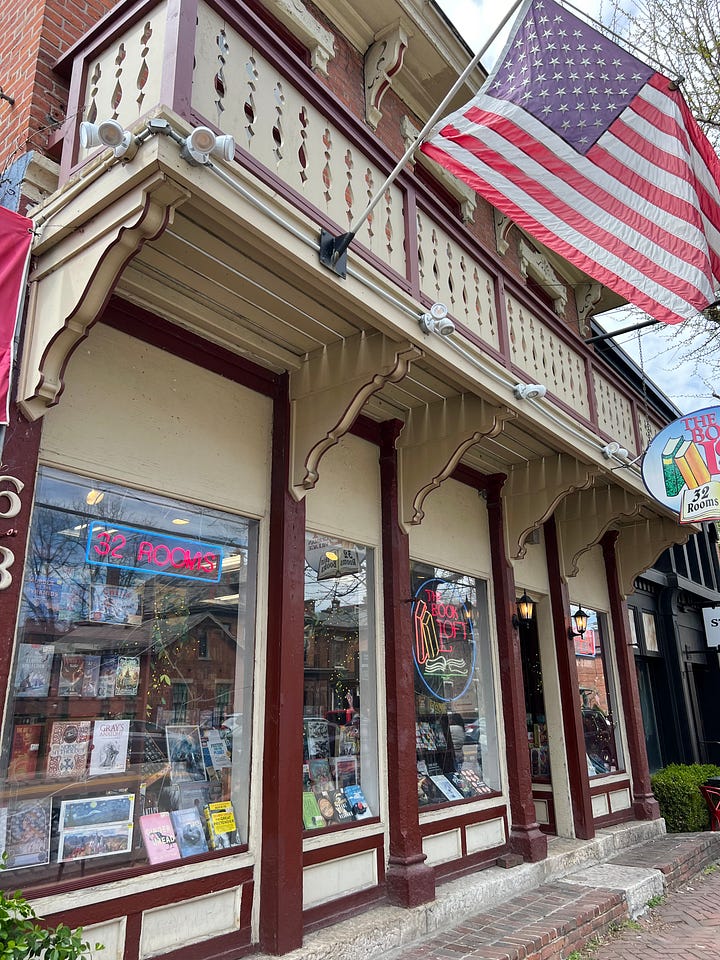
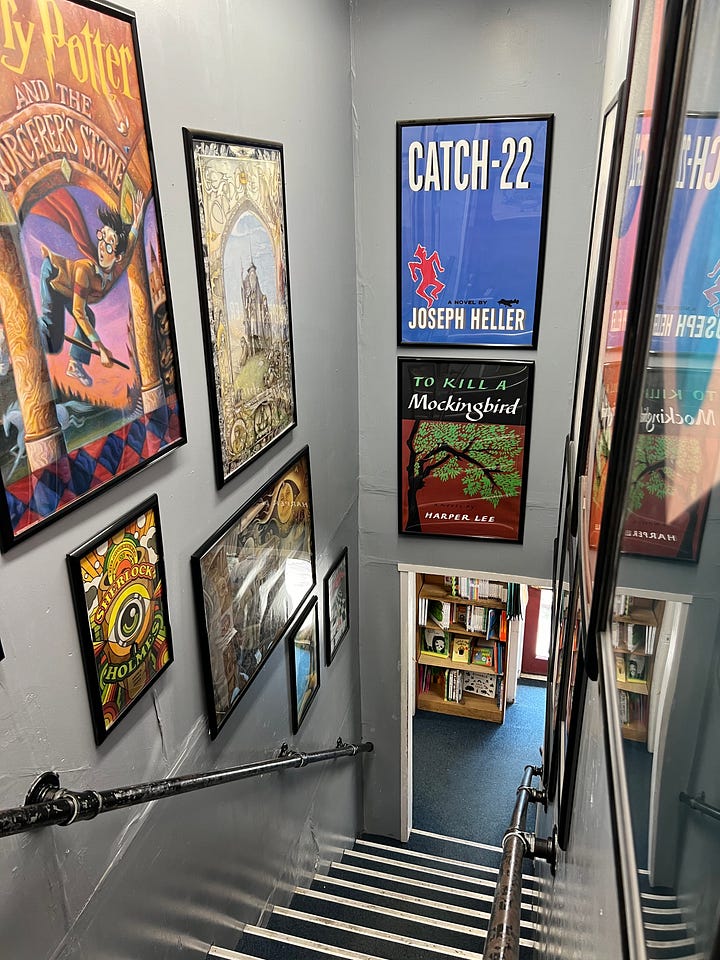
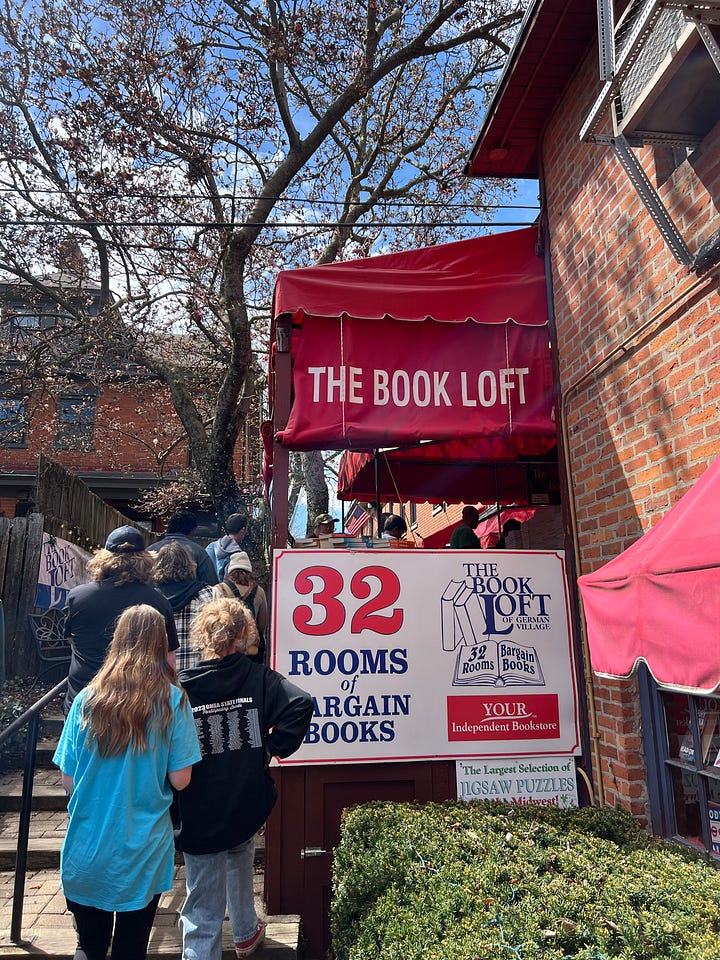
32 Rooms of Books
Keep driving on High Street and you’ll move from the neighborhood where I grew up, called Clintonville, all the way south through the Ohio State University campus, the Short North arts district, downtown, and eventually into German Village. It was settled largely by German immigrants in the mid-1800s and most of the buildings were built between 1840 and 1914. The German Village Society website tells me that descendants at one time comprised as much as a third of the population of the entire city of Columbus. The streets are made of brick and it’s very cute. When I was younger, I mostly went to German Village to go to Katzinger’s Deli or to see outdoor theater during the summer in Schiller Park. But on this visit, I wanted to make sure my kids experienced The Book Loft. There are famously 32 rooms in a big, old, rambling ‘house’ that smells most definitely like a bookstore should smell and almost requires that you get lost for a while. On the Sunday we went, there was a line to get in.
The Topiary Garden
According to the internet, this is the only public park of its kind in the world. Who knows, but The Topiary Garden next to the former Deaf School campus is one of those wacky places worth a stop. Columbus artists Elaine and James T. Mason came up with the idea to create the famous post-Impressionist painting by Georges Seurat, A Sunday Afternoon on the Island of LaGrande Jatte, out of bushes. And in the early 90s they shaped dozens of evergreen shrubs into figures from Seurat’s painting, including 54 people, boats on a pond that was built as a stand-in for the Seine River, and some animals. This quirky landmark came into existence just before I graduated from high school right down the road at the Fort Hayes military post, which is now the campus of Fort Hayes Metropolitan Education Center, a school with a focus on the arts and college prep. A couple hundred ninth and tenth graders started in the late 80s and an additional grade level was added each year. My friends who I gathered with for the 2024 solar eclipse, we were part of the third graduating class. Debates are still ongoing about who should have been valedictorian that year, but I’ll leave that story for another time.
Thanks again for reading, and special thanks to Nadine Pennypacker for sharing her photos of our kids running to the Amazon van.
If you know someone who would enjoy reading this, please share Wanderlife with them! And I’d love to hear your thoughts on wonder, awe, the solar eclipse, and the gifts of travel. Tell me what you are thinking about!
Sincerely,
If you still have wanderlust, check out postcards from these other places:

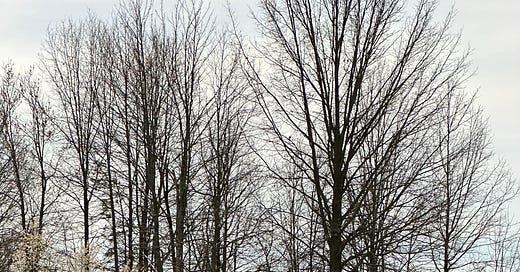



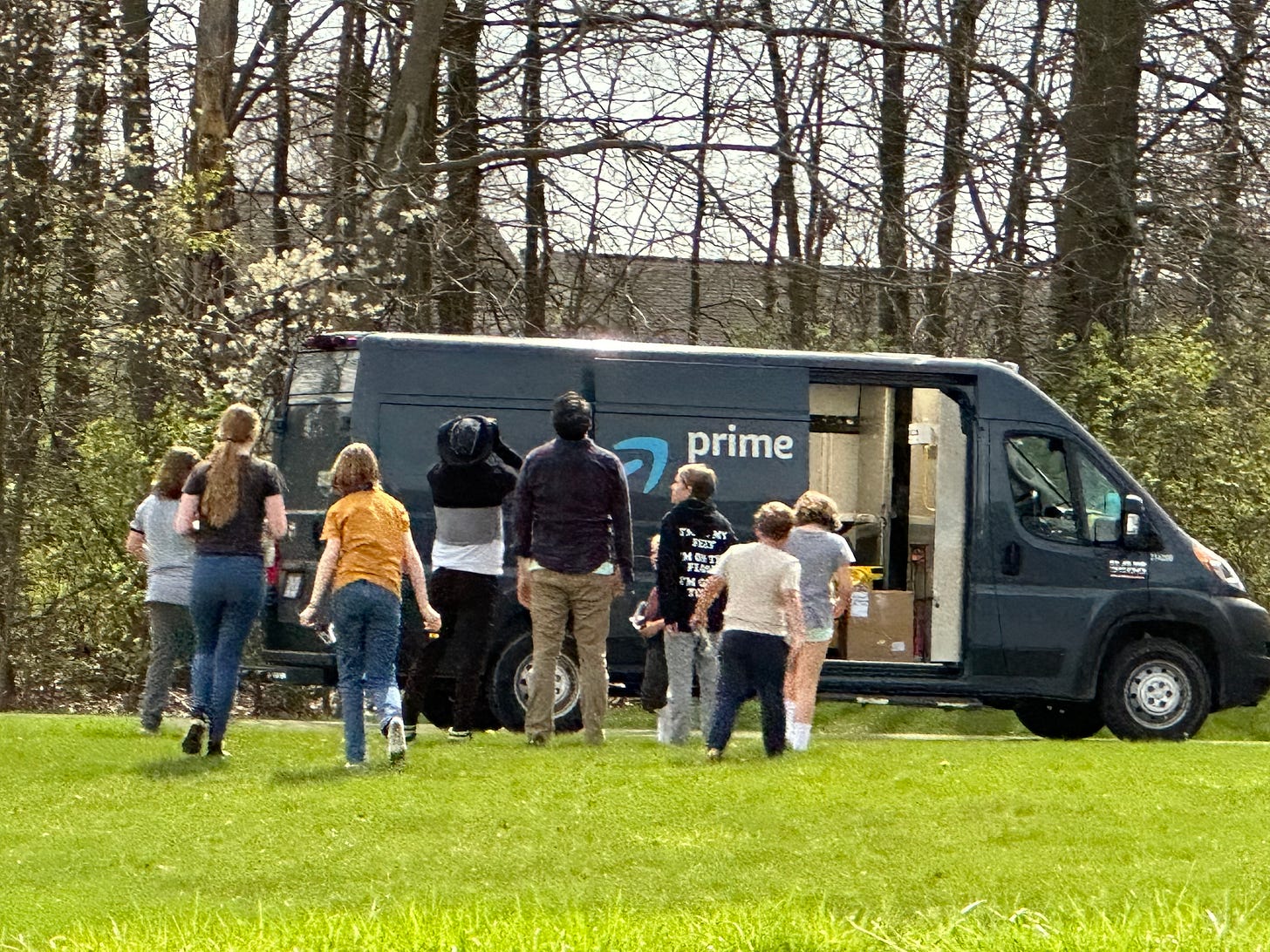
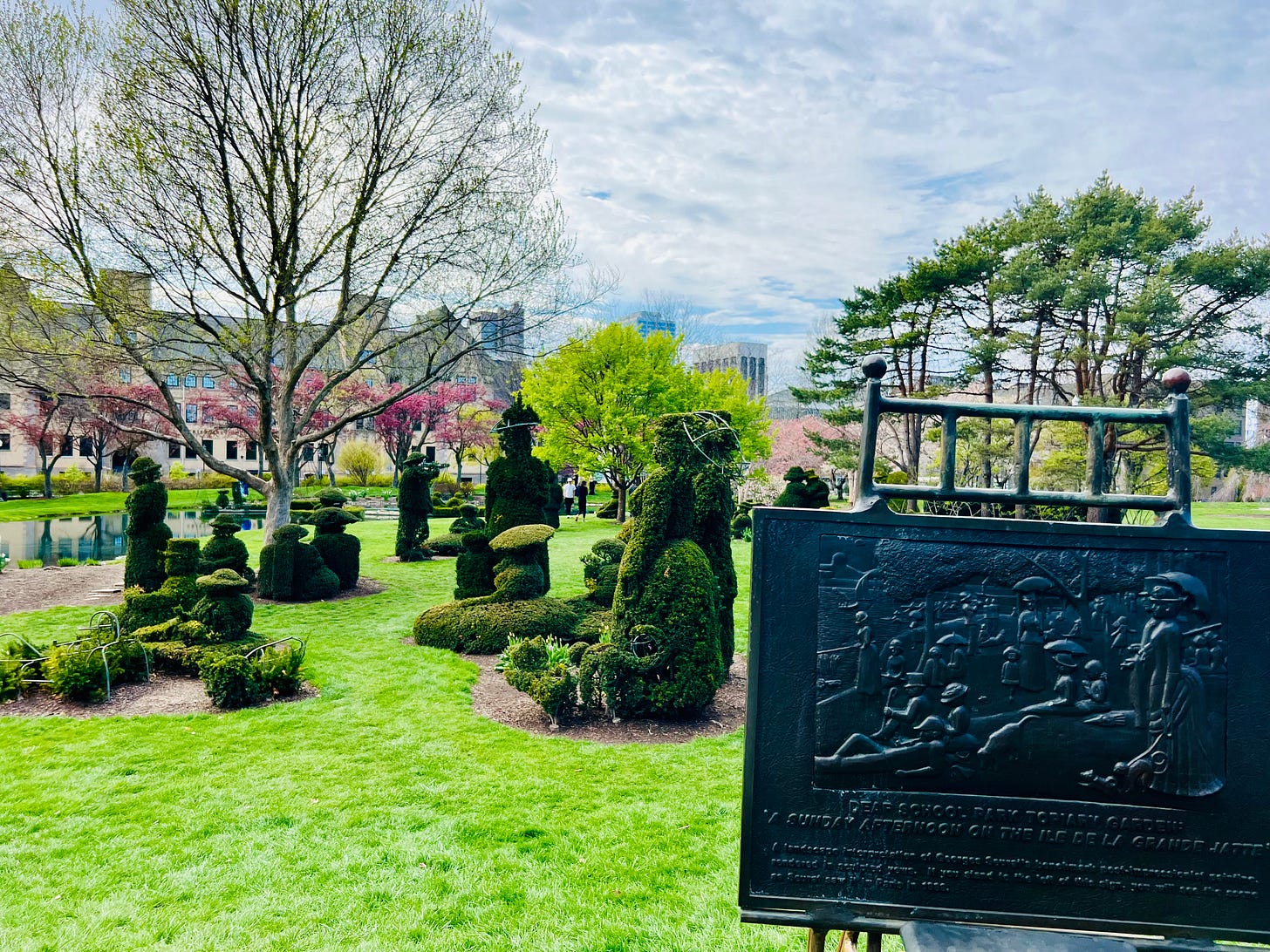

"In a study of people watching fireworks in 144 different countries, they found that people’s facial expressions were the same." That made me smile. So wholesome, as is the Amazon driver scene. This Greater Good Science Center sounds like a fascinating place to work at. I also totally share your experience with travel and noticing things - I just took a bus to a nearby-ish city that I enjoyed so thoroughly that I didn't want it to end, even after 4 hours. Just observing, thinking, being. So nice.
Sounds like I need to take a trip to Ohio for the 32 room bookstore